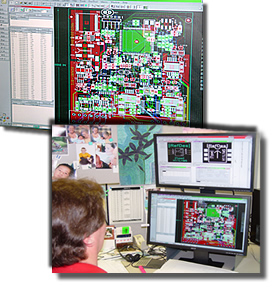First of all, Cloning Printed Circuit Board Layout Design can reduce production costs and shorten development cycles
Cloning Printed Circuit Board Layout design has its long-term economic interests behind such a prevalence in the industry. In the process of PCB Board development, the cost of PCB Layout design accounts for more than one-half of the total Research and development cost. In the reverse research of existing products, the cost will be greatly reduced, and the corresponding research and development cycle will be significantly shortened, thus bringing huge economic benefits to the enterprise. The cost and market price of other electronic consumer products that naturally depend on PCB Board will also be reduced accordingly, which will continue to stimulate the domestic electronic consumer market.

PCB Board layout design is an important part of pcb product development. In industrial applications, it generally refers to the layout and routing of electronic components on the PCB board layout after determining the schematic diagram of the pcb circuit board, and the ideal layout is designed to achieve the desired performance. The factors to be considered include the size of the printed circuit board and components, the interface, the number of wiring layers and the line width, and electromagnetic compatibility. In the process, designers often need to spend a long time and energy.
Secondly is Overcome technical barriers and break market monopolies
PCB Board design companies often encounter such technical bottlenecks in the product development process, and those key technologies are often in the hands of enterprises in the industry, so it is easy to form a market monopoly. Reverse Engineering PCB Board Layout Design on the market can quickly eliminate technical bottlenecks, and update or upgrade on the basis of the original technology, so as to launch their own new products and effectively maintain the competitive situation in the market.






